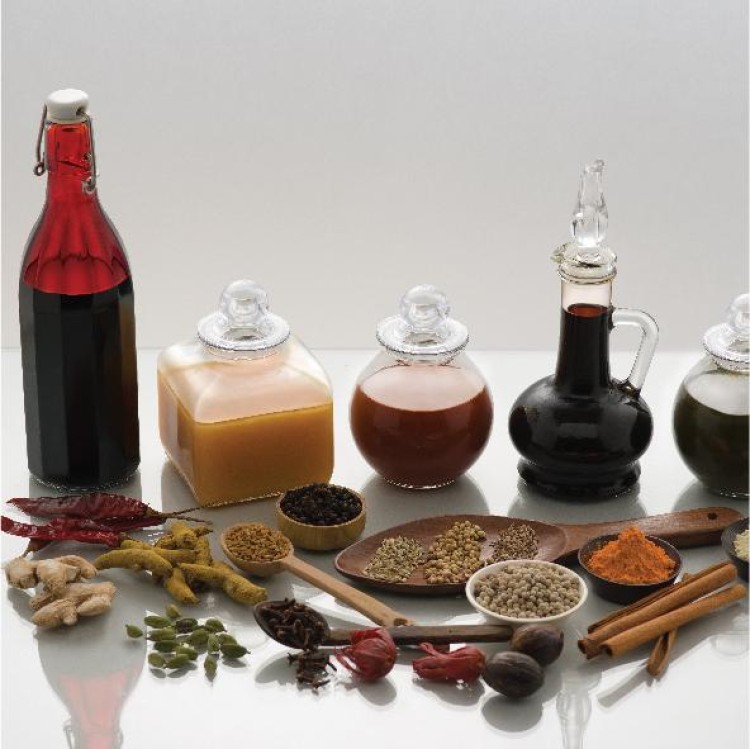
The Essential Oil sector is growing fast, nowa days industries are confused with the terms and applications of Essential oil and Oleoresin, however both have diffent type of physiological properties.
Oleoresins are resinlike viscous materials obtained when a spice is extracted with a hydrocarbon solvent. The solvent is removed by vacuum distillation and reused. Oleoresins are 5–20 times stronger in flavor than their corresponding spices and are weaker than the corresponding essential oils. Oleoresins’ advantages over their corresponding spices are similar to those of essential oils. During extraction of oleoresins, fewer low flavor notes are destroyed than during steam distillation of the essential oils. In addition, the heavy oils of the oleoresins contain some important flavor notes that are absent in volatile oils. For example, oil of black pepper contains only the top black pepper notes, whereas black pepper oleoresin contains the pungent crystalline material known as piperine and other low flavor notes as well as the top flavor notes. Therefore, the closest liquid extractive of any spice is its oleoresin. Oleoresins are used at 0.1–0.5% in the finished product.
Whereas, Essential oil are steam distilled to extracted and is very less thicker than oleoresin. The Essentail Oil is genrally therapeutic and cosmetic grade whereas Oleoresisn are gnerally food grade items.
Oleoresin is a viscous liquid or semi-solid material derived by extraction from finely-ground powder, which contains the aroma and flavour of its source. Three types of oleoresin are produced. High-pungency Capsicum oleoresin is produced primarily in India, Africa, and China near the production areas of low-cost, very pungent chilli varieties. Medium-pungency red pepper oleoresin is produced in many regions. Non-pungent paprika oleoresin is produced in Spain, Ethiopia, Morocco, Israel, India, the USA, Mexico, and South Africa (Govindarajan, 1986). Oleoresin is extracted from finely ground chilli or paprika powder. A volatile non-aqueous solvent such as hexane, ether, or ethylene dichloride is added and allowed to thoroughly wet the material. The oleoresin enters into solution with the solvent, forming micella. After a period of time, the micella are removed, and the solvent replaced with fresh solvent to continue the extraction. The solvent is subsequently removed from the extract by evaporation at the lowest practical temperature to avoid loss of aromatic volatile compounds. This is done in two stages, the first stage removes approximately 95 % in a standard film evaporator, and then the concentrated micella pass through a partial vacuum that removes the rest of the solvent and reduces the miscella to oleoresin. The remaining solvent held in the mass of the extracted powder is recovered by very high vacuum. Typical yield of oleoresin depends on the solvent used and ranges from 11.5–16.5 % (Govindarajan, 1986). The oleoresin pungency depends on the pungency of the original powder. Paprika oleoresin has little to no pungency, and is used for its colour and flavour properties, while Capsicum oleoresin can have CAPS levels up to 10 %, and is used primarily as a source of high pungency.

|

|
Currently, there are no comment.
Login to comment